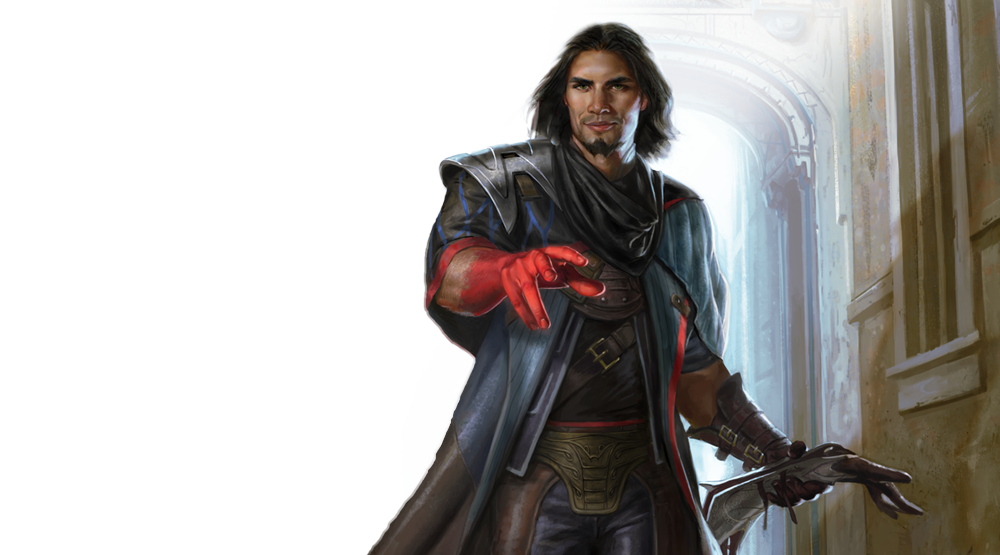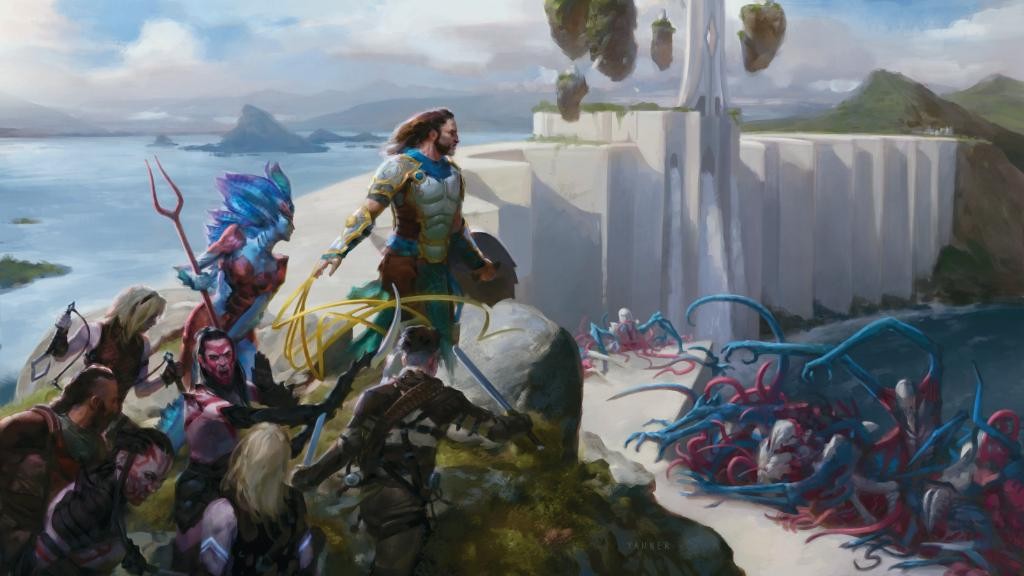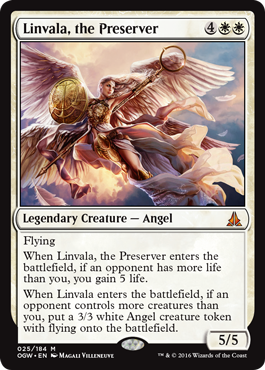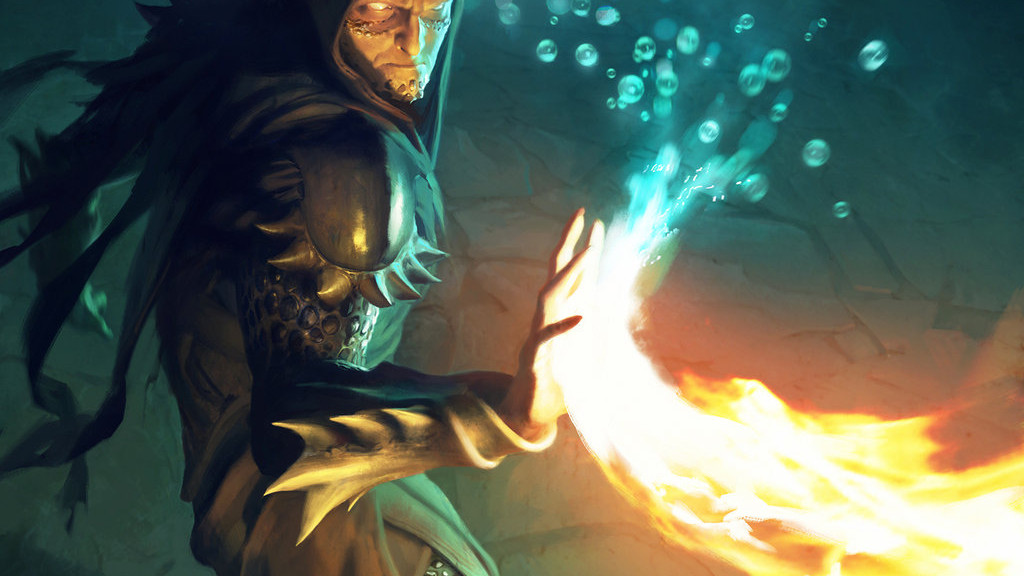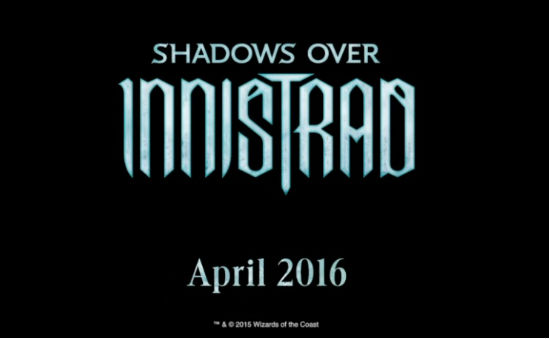As MTG financiers, we see a lot of ideas thrown around for speculation targets. We have a good understanding of what kinds of events can drive prices, but my goal with this article is to streamline the vetting process for cards that we’re considering buying. This will allow us evaluate more cards more quickly, leading us to the best speculative purchases we can make. Ready?
Relevant Factors
Let’s briefly go through the relevant factors we can evaluate before buying in on a card.
Formats
What format(s) does the card see play in? Here’s a quick breakdown of how cards are impacted by particular formats:
Standard: Prices can move quickly based on players’ tournament needs, but prices are volatile and will not last, especially once rotation starts to loom.
Modern: Cards in this format just get more and more expensive. If a card is a multi-deck staple, a four-of, appears on MTG Goldfish’s format staples list, see play in other formats, is old, and/or has other contributing factors, prices can get really high. Modern Masters sets mean that every card in the format is at risk of reprint, however.
Legacy: As MTGPrice’s Travis Allen notes, Legacy is starting to drive prices less than it has in the previous five years. That doesn’t mean it can’t still make cards expensive, but it’s not as cut-and-dry as it used to be.
Vintage: A relative few number of players enjoys Vintage, but those that do have invested lots of money in the format. If a card is old or foil, there’s a chance Vintage will make it expensive, but the format isn’t widespread enough to impact the prices of most newer cards, especially non-foils.
Commander: Commander is likely the most popular casual format these days, and this allows it to drive prices on highly demanded cards. That said, as a one-of format, cards have to see play in many different archetypes to see huge spikes—one-archetype players are usually not worth much, even if they’re really good. MTGPrice’s Jason Alt does a great job focusing on the financial implications of Commander week-in, week-out.
Cube: Cube is gaining in popularity, but since not every player needs to own one, it’s really hard for Cube alone to impact a card’s price. It has the largest effect on foil prices, since they’re so much scarcer.
Print Run
A card printed in a large, fall set will have many more copies in existence than one printed in a small, follow-up set. When considering speculating on one of two cards with all other things being equal, you should pretty much always go with the one in shorter supply.
It’s important to know about additional printings, though. If you search for a card like Tasigur, the Golden Fang, you’ll see only the Fate Reforged printing, but that ignores the fact that the card was printed in an Event Deck. This additional influx in supply hurt Tasigur’s price, and if you’re considering buying or selling the card, this is useful information to know. Intro Packs are another source of additional printings for a card that might not necessarily show up when searching to see which sets a card was printed in. By contrast, things like Duel Deck and From the Vault printings will show up as separate sets, making them much easier to identify.
Print run and format demand are both relatively easy to approximate, although we should note that Magic players aren’t given enough information for us to know the exact numbers on these things. Nonetheless, some of the other factors—while no less relevant to a card’s price—are harder to identify.
Likelihood of Reprint
This is honestly just a judgment call. When you have a card from the Reserved List, the judgment call is pretty easy to make—it won’t be reprinted—but when you have something like Abrupt Decay, things get more difficult. You have to consider questions like: what products is this most likely to see a reprint in? what upcoming products would make sense to have this as an inclusion? is its set likely to be covered by the next Modern Masters? Obviously, the answers to all these questions and similar ones are highly speculative, but we have all kinds of resources to help us make educated guesses—and that’s exactly what we need to be doing.
Historical Comparisons
What similar cards have been printed in the past? How did they perform financially? Is this card better, worse, or just different from those other ones? Does it outclass them or is it outclassed by them? If it’s a reprint, how did the first printing perform?
Standard Legality
Is the card legal in Standard? For how much longer? Will it go up or down at rotation? How much is its price predicated on Standard?
These are some of the big-picture things we want to keep an eye on, but it’s getting tough to consider this in the abstract. Let’s move on to a case study.
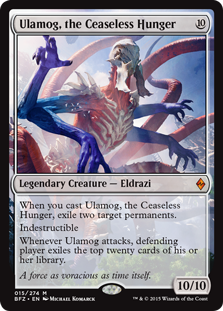
With a Fair Trade Price as of this writing of $19.97, Ulamog has seen nearly a $5 increase in the past month. Might it still be a good buy? Let’s go down the list of the relevant factors.
Formats
- Lots: Commander/Cube
- Some: Standard/Modern (still being determined)
- None: Legacy or Vintage (not replacing Emrakul any time soon)
Print Run
- Rarity: Mythic rare
- Set size: Large, fall set—the most recent, meaning one of the highest print runs of all time.
- Additional printings: No supplementary product or promotional printings (except for prerelease)
Likelihood of Reprint
- In a Standard-legal expansion? Very low
- In a supplementary product (DD, EV, Commander, etc.)? Low
- In a premium product (FTV, judge foil, etc.)? Medium
- In Modern Masters 2017? Very low
- In Modern Masters 2019? High
Historical Comparisons
- Highest prices of original three Eldrazi: $54.98; $64.98; $69.98 (approximately three years after release)
Standard Legality
- Entered Standard fall 2015; leaves spring 2017
- Price tied to Standard? Very little
- Expected losses from rotation? Very low
- Expected gains after printing stops? High
Of course, much of the above consists of opinion, estimations, educated guesses, and wild assumptions. Nonetheless, using the above cheat sheet can help us get closer to an objective consideration of all the factors that might influence our decision to buy or sell a card.
To summarize my above bulletpoints in prose form: Ulamog will be in high demand by casual players, and we’ve seen what that kind of demand can do for Eldrazi titans in the historical comparisons. He comes from a highly opened set, but is a mythic rare with no additional printings, and a relatively small chance of being reprinted before Modern Masters 2019. As a card being impacted very little by Standard, it’s likely that Ulamog’s price won’t be affected by rotation and we can pick these up freely right now.
Let’s do one more case study before we close today.
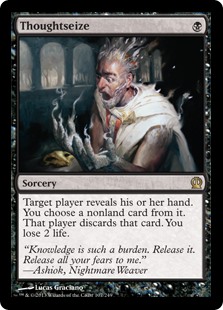
With a Fair Trade Price of $19.40 today, Thoughtseize hasn’t exactly set the world on fire the way we expected after rotation.
Formats
- Lots: Modern/Legacy/Vintage/Cube
- Some: N/A
- None: Standard, Commander
(Not that the card is in zero Commander decks, but one-for-one discard isn’t especially potent in the format.)
Print Run
- Rarity: Rare in Lorwyn (2007) and rare in Theros (2014)
- Set size: Both printings were in large, fall sets
- Additional printings: No supplementary product or promotional printings
Likelihood of Reprint
- In a Standard-legal expansion? Virtually nil
- In a supplementary product (DD, EV, Commander, etc.)? Very low
- In a premium product (FTV, judge foil, etc.)? High-ish (an eternal staple with no promos or unique premium versions seems suspect to me)
- In Modern Masters 2017? Possible but unlikely
- In Modern Masters 2019? A little more possible but still unlikely
Historical Comparisons
- Before the Theros printing, Lorwyn Thoughtseize topped out above $75.
- The current price of the original printing is $40.15, more than double the Theros version.
Standard Legality
- Not legal in Standard
- Price tied to Standard? N/A
- Expected losses from rotation? N/A
- Expected gains after printing stops? High
Everyone expected Thoughtseize to go up after rotation, but so far it has disappointed. Nonetheless, as a four-of staple in every eternal format that has only two printings (albeit at rare in large, fall sets), this is bound to gain in price eventually. Nevertheless, I’m not excited to buy today based on the plummeting buylist price of late:
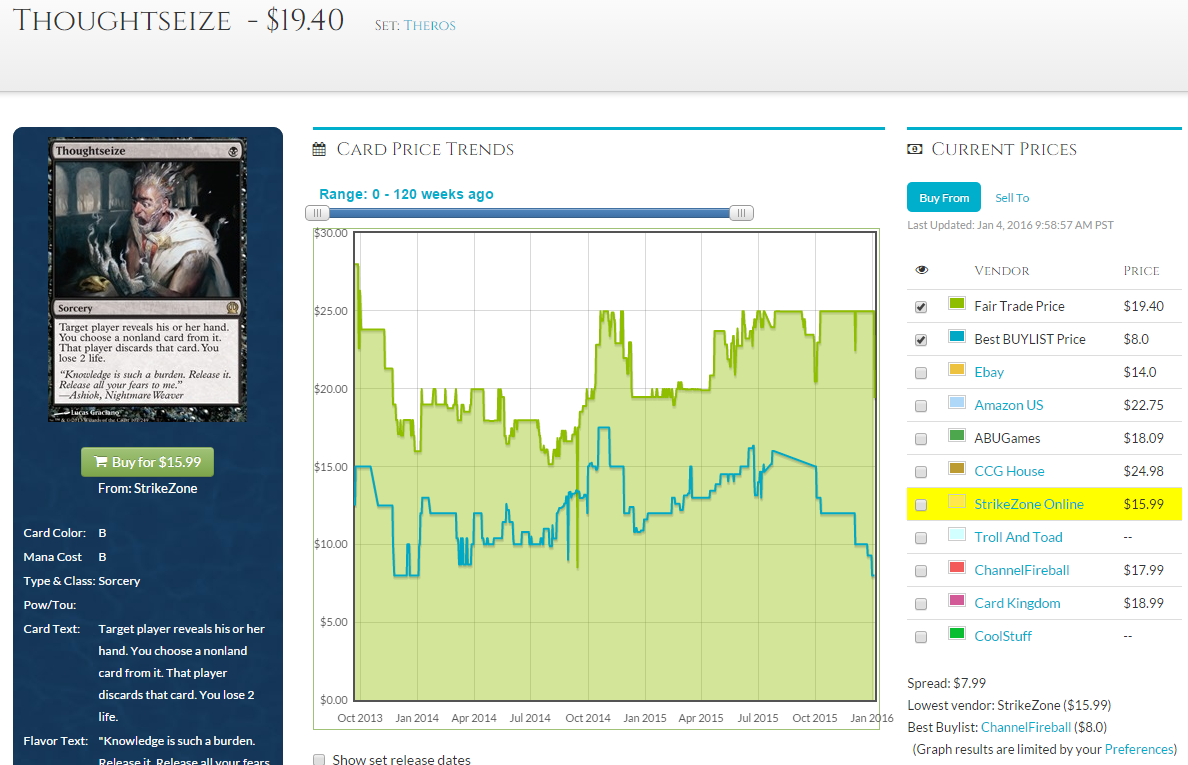
Keeping an eye on that blue line will tell you when to buy—and this is more or less guaranteed to be a good spec target at some point. Keep a close eye here.
Now You Do It
I’ve shown you a couple examples, show me your breakdown of a speculation target you like in the comments. Here’s the outline:
Formats
Print Run
- Rarity:
- Set size:
- Additional printings:
Likelihood of Reprint
- In a Standard-legal expansion?
- In a supplementary product (DD, EV, Commander, etc.)?
- In a premium product (FTV, judge foil, etc.)?
- In Modern Masters 2017?
- In Modern Masters 2019?
Historical Comparisons
- Past printings of this card?
- Comparable cards?
Standard Legality
- Entered Standard _____; leaves ______
- Price tied to Standard?
- Expected losses from rotation?
- Expected gains after printing stops?
Pricing Trends
- Retail price direction?
- Buylist price direction?
Thanks for reading. Until next time!
